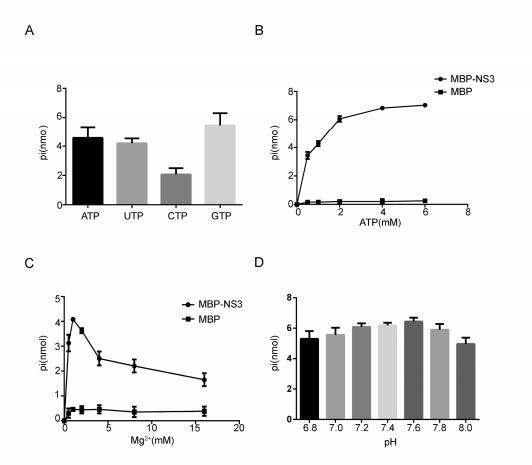Noroviruses are a genetically diverse group of non-enveloped, positive-stranded RNA viruses belonging to genus Norovirus of the family Caliciviridae. They arefurther segregated into seven genogroups (GI-GVII), three of which cause diseases exclusively in humans (GI, GII, and GIV). Human noroviruses (HuNoVs) are now considered the leading cause of viral gastroenteritis in humans across the globe. However, despite its substantial burden and potential threat, there are still no vaccines or antiviral drugs available to prevent or treat norovirus infection.
In a present study by cooperation with scientists from University of Cambridge, Imperial College London and etc., the research group led by Prof. ZHOU Xi in Wuhan Institute of Virology of the Chinese Academy of Sciences showed that NS3 encoded by Norwalk virus (NV; genotype GI.1 HuNoV), the prototype strain of the genus Norovirus, also has NTP-dependent RNA helicase activity.
Moreover, the scientists demonstrate that NS3 can also act as an RNA chaperone that is able to remodel structured RNAs and facilitate strand annealing independently of NTP. They have also found that NS3 can facilitate the in vitro synthesis of vRNA by NV NS7/RNA-dependent RNA polymerase (RdRP) on the 3´antigenomic template, suggesting that NS3 plays important role in norovirus RNA replication.
Additionally, they have demonstrated that the guanidine hydrochloride (GuHCl), which is a U.S. FDA-approved small molecule drug and a well-known inhibitor of poliovirus 2CATPase 133, is able to inhibit the RNA helicase activity of NS3 in a dose-dependent manner.
More importantly, GuHCl has been further determined to inhibit the replication of NV replicon in cultured human cells, which highlights the functional significance of NS3 in noroviral life cycle.
The results have been published in Journal of Virology entitled "Human Norovirus NS3 has RNA Helicase and Chaperoning Activities".
This work was supported by the National Natural Science Foundation of China‐Excellent Young Scientists Fund, the Newton Advanced Fellowship from the UK Academy of Medical Sciences and NSFC, the NSFC grant, the Strategic Priority Research Program of Chinese Academy of Sciences, the National High-Tech R&D Program of China (863 Program), the National Basic Research Program of China (973 Program), and the Distinguished Young Scientists Fund of Hubei Province.

NV NS3 has NTPase activity. Image by ZHOU Xi
Contact:
ZHOU Xi
E-mail: zhouxi@wh.iov.cn
Wuhan Institute of Virology, Chinese Academy of Sciences, Wuhan 430071, China (http://english.whiov.cas.cn/)